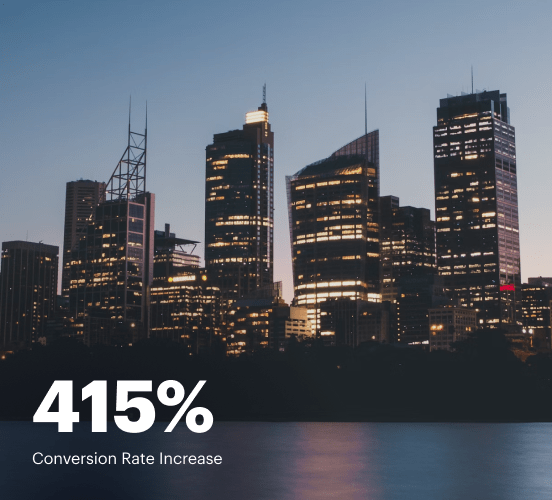WordPress vs. TARS: the best platform for a seamless web experience
Discover how WordPress compares to TARS regarding features and usability. Find out which platform provides the competitive advantage your business deserves.
Get startedSee how Instapage stacks up against the competition
| Feature | Instapage | Other builders |
| Drag-and-Drop Tools | ||
| Conversion-optimized templates | ||
| Manual and AI-powered A/B Tests | ||
| AI content suggestions | ||
| Popups and sticky bars | ||
| Canvas and grid blocks | ||
| Reusable and global elements | ||
| Form and popup builders | ||
| Built-in Heatmaps | ||
| Central analytics dashboard | ||
| Ad-to-page personalization and collections | ||
| Contacts, lists, and email | ||
| Dedicated, full-service CRO experts | ||
| Enterprise-ready platform |
Leading the way in building high-performing landing pages





Why Instapage is the smarter choice for your campaigns
Get everything you need to build, scale, and optimize high-converting landing pages—without coding.
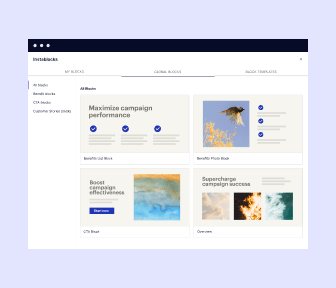
Easier page building without coding
Instapage offers a flexible and seamless page creation experience with a library of 500+ conversion-focused layouts, Instablocks®, a drag-and-drop builder, and AI content generation. With technologies like Thor Render Engine®, you can create on-brand, mobile-responsive landing pages that load quickly and start converting during initial visitor clicks.
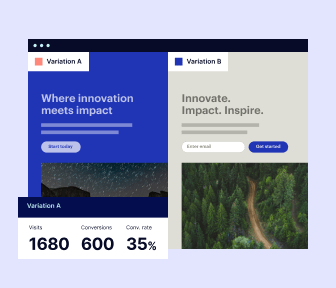
More insights — better results
Instapage lets you see in detail how each landing page experience and variation is performing so you can make targeted changes that boost page conversions. Use heatmaps for a better understanding of on-page activities, run A/B tests and AI-assisted experiments, and then track and evaluate results within robust analytics dashboards.

More personalized experiences
Instapage lets you quickly create high-performing landing pages tailored to each of your ad campaigns. Deliver personalized experiences for distinct audiences using dynamic text replacement. Effortlessly align specific advertisements to unique pages with AdMaps. Monitor audience-level metrics using our advanced data tools.
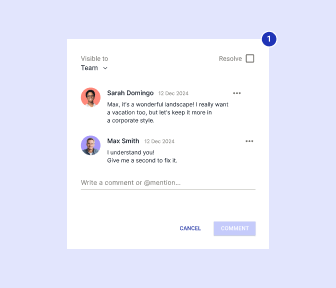
Built-in collaboration
Instapage collaboration capabilities bring your entire team together to speed up the process of landing page review, approval, and launch. No more frustrating and unnecessary revisions or edits scattered across emails. Provide instant feedback, conduct real-time page edits, and securely share your pages with outside stakeholders.
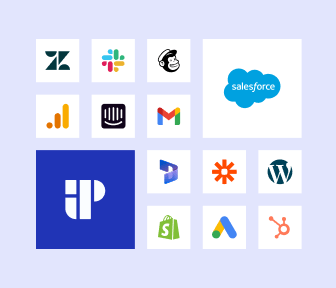
Free up time for your business
Invest time into business growth, not busy work. Launch landing pages faster with reusable forms and templates. Build once, reuse forever.
Explore all integrations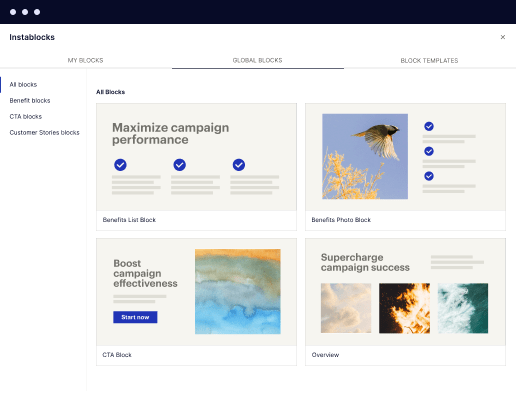
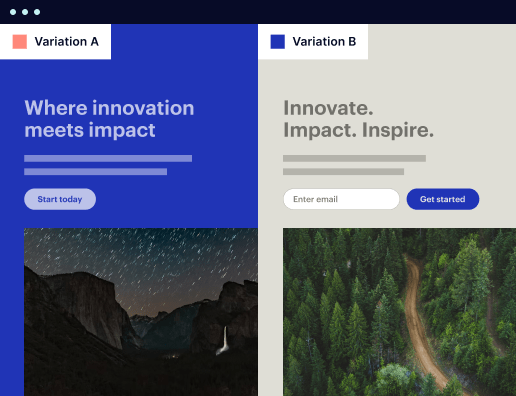
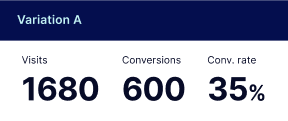
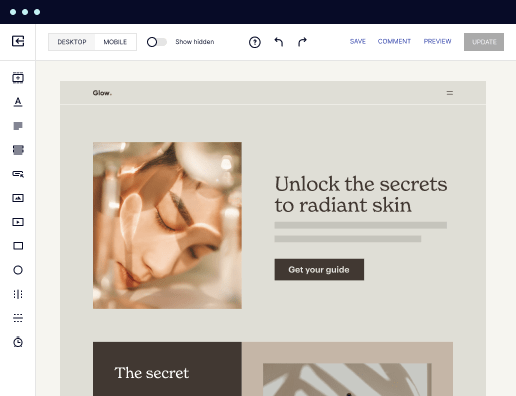

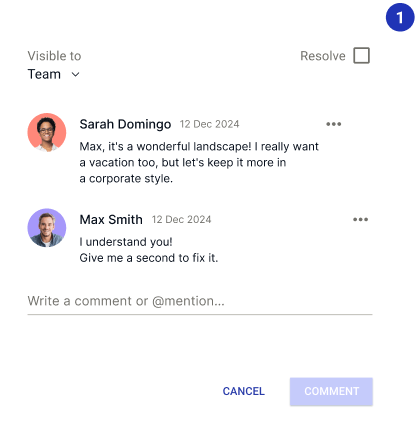

Easier page building without coding
Instapage offers a flexible and seamless page creation experience with a library of 500+ conversion-focused layouts, Instablocks®, a drag-and-drop builder, and AI content generation. With technologies like Thor Render Engine®, you can create on-brand, mobile-responsive landing pages that load quickly and start converting during initial visitor clicks.
More insights — better results
Instapage lets you see in detail how each landing page experience and variation is performing so you can make targeted changes that boost page conversions. Use heatmaps for a better understanding of on-page activities, run A/B tests and AI-assisted experiments, and then track and evaluate results within robust analytics dashboards.
More personalized experiences
Instapage lets you quickly create high-performing landing pages tailored to each of your ad campaigns. Deliver personalized experiences for distinct audiences using dynamic text replacement. Effortlessly align specific advertisements to unique pages with AdMaps. Monitor audience-level metrics using our advanced data tools.
Built-in collaboration
Instapage collaboration capabilities bring your entire team together to speed up the process of landing page review, approval, and launch. No more frustrating and unnecessary revisions or edits scattered across emails. Provide instant feedback, conduct real-time page edits, and securely share your pages with outside stakeholders.
Free up time for your business
Invest time into business growth, not busy work. Launch landing pages faster with reusable forms and templates. Build once, reuse forever.
Explore all integrationsGet started with Instapage in a few steps
-
Create your Instapage account
Start with Instapage by signing up via Google or your email. You'll get access to a free 14-day trial to discover Instapage capabilities. Feel free to cancel anytime during the 14-day trial if you decide that our product is not suitable for your business. -
Build and personalize your page
Create your first landing page from scratch or choose a template from 500+ customizable layouts. Use the drag-and-drop builder to add page elements, fonts, and backgrounds, refine content with AI, or add custom HTML, Javascript, and CSS. -
Review and make edits
Collaborate on page designs and streamline review processes. Invite your team members and stakeholders to review, edit, and provide feedback on your landing page. Collaborate knowing your page is confidential and only accessible to authorized users. -
Publish and track page performance
Publish your page to a domain or custom URL. Connect your pages to the ads you've created and track page performance within the analytics dashboard, run A/B tests and AI experiments, analyze results, and continuously optimize your landing page to maintain high conversions.
WordPress vs. TARS: A Clash of Titans in Landing Page Builders
When it comes to creating stunning landing pages, the choices can feel overwhelming. With WordPress, TARS, and the rising star Instapage in the mix, selecting the right platform can be a journey filled with twists and turns. In this showdown, we will focus on the strengths and weaknesses of WordPress and TARS while keeping an eye on how Instapage stands as a formidable contender. Each of these platforms boasts unique features, and as we dissect their capabilities, you'll discover which one may suit your needs best. So, buckle up as we dive into this digital duel—where creativity, usability, support, and price take center stage. Moreover, highlighting the nuances of these platforms will not only inform your decision but also enrich your overall experience as you navigate through landing page creation.
Introducing the Contenders
Kicking things off, let’s meet our main players. WordPress has been the go-to option for countless website creators, thanks to its extensive plugin ecosystem and unrivaled flexibility. It’s like the Swiss Army knife of web design—offering tools for virtually every scenario. On the other side of the ring, we have TARS, making waves with its chatbot-based approach to building interactive landing pages, allowing users to engage clients like never before. Imagine setting up a conversation before they even hit 'submit'! The bros over at Instapage, meanwhile, are like the underdog hero with tailored solutions for marketers seeking to boost conversion rates through custom landing pages. These platforms each have their distinct strengths and strategies, making the match-up not just competitive but also incredibly interesting to analyze as we move forward.
Feature Face-off: The Imperatives
In the arena of features, both WordPress and TARS come prepared, showcasing their respective advantages. WordPress shines with its plethora of plugins that enable integrations with third-party services, SEO optimization tools, and diverse design options. Conversely, TARS brings its A-game with drag-and-drop functionality to create chat-focused landing pages, revolutionizing the approach to user interaction and engagement. But let's not forget Instapage, lurking in the background and ready to unleash its highly customizable templates and A/B testing capabilities. Each platform is vying for the title of the ultimate feature champion, and while both WordPress and TARS flaunt impressive abilities, there’s a third competitor whose features deserve serious attention.
User Experience: Who Packs a Easier Punch?
Navigating through website builders can sometimes feel like a maze with no exit. So how does each competitor handle usability? WordPress, for all its power, comes with a learning curve that might daunt newbies. Yet, once you get over that hump, it's smooth sailing—like a roller coaster you just mastered. TARS, with its intuitive interface, makes building landing pages a delightful experience, appealing to both beginners and seasoned marketers. Imagining dragging components around like building blocks may evoke a wave of nostalgia! As for Instapage, it strikes a balance between user-friendly designs and advanced functionalities, allowing even the most novice marketer to feel like a pro. User experience in this arena isn’t just a feature; it's a game changer.
What WordPress Brings to the Table:
- Customizable themes and templates that fit various industries.
- Vast library of plugins including SEO tools, analytics, and form builders.
- Robust community support providing tutorials and forums.
- Flexible integration with eCommerce platforms for online sales.
- Strong content management system (CMS) for blogs and websites.
What Makes TARS Shine:
- Drag-and-drop functionality for creating interactive chat flows.
- Pre-built templates designed specifically for conversion.
- Easy customization options for branding and personal touch.
- Integration with various CRMs and marketing tools for streamlined workflows.
Common Strengths Shared by Both Platforms:
- Strong focus on user engagement through interactive elements.
- Mobile-responsive design ensuring optimal performance on all devices.
- Analytics capabilities to monitor performance and conversion rates.
- Access to robust support communities for troubleshooting and advice.
- Capability to run A/B tests for optimizing landing page effectiveness.
As we compare these two contenders, it’s clear they bring unique skill sets to the ring. However, don’t blink, because Instapage is interjecting with its specialized features aimed at boosting conversion rates. WordPress and TARS have their merits, but the tailored marketing approach of Instapage offers distinct advantages. Let’s see how these platforms hold up under scrutiny as we dive deeper into the next round.
The Performance Round: Speed vs. Responsiveness
In today's fast-paced online world, performance is key. Website loading times and mobile responsiveness are paramount; a slow page is like molasses on a cold winter day—nobody is keen on waiting. WordPress can be fast, but its performance often hinges on the theme and plugins being used. If users overload the platform with heavy plugins, it can lead to sluggish performance. TARS, on the other hand, prides itself on lightweight pages tailored to speed. Performance isn’t just about speed though; mobile responsiveness is equally essential. WordPress can be adaptive on mobile, but it might require additional configurations, while TARS is designed with mobile interactions in mind from the outset. With the focus on quick, accessible pages, how do these platforms handle performance in the battle for user attention?
Support Systems: The Safety Nets
When things go south, having a reliable support system can turn the tide. Support is the unsung hero of any platform, and both WordPress and TARS have built solid foundations in this area. WordPress shines with an extensive knowledge base, forums, and a myriad of tutorials available at users' fingertips. TARS also offers comprehensive support, including live chat and a library to assist users in mastering its functionalities. Instapage, never one to be outdone, provides dedicated account managers for premium users, bolstering its reputation for superior customer service. Each of these platforms showcases an understanding that a strong support network is crucial to user satisfaction.
Pricing Showdown: Value for Your Buck
Unpacking WordPress Pricing Benefits:
- Self-hosting options allow control over costs and service providers.
- A range of free themes and plugins to start without initial investment.
- Flexible pricing structures enable users to choose what best fits their budget.
- Potential for low ongoing costs if handled personally.
TARS Pricing Benefits: What You Get:
- Transparent pricing tiers corresponding to feature access.
- Pay-for-use model allows businesses to scale without hefty commitments.
- Value-focused plans designed around customer interfacing.
- Engagement features focused on lead generation to justify costs.
- In-built analytics justifying pricing based on performance metrics.
When it comes to pricing strategy, each platform takes a different approach. WordPress can be budget-friendly due to the availability of free tools but may accrue costs later with premium upgrades. TARS, meanwhile, offers a straightforward pricing structure with options to choose what suits your company's needs best. Yet, looking towards Instapage, which offers a competitive pricing strategy designed to align with various business goals, you might find a greater value for your investment. It’s interesting to see how pricing not only influences features but also impacts user choices.
Let’s be upfront about the pricing plans—transparency in costs is essential. Knowing what you’re paying for can save headaches down the road. Both WordPress and TARS have their allure in pricing; what's enticing can sometimes hide unexpected surprises in the least anticipated places. Ultimately, the choice lies in aligning your budget with your objectives to make a sound investment.
And Then There's Instapage: The Game Changer
As we round off our comparison, Instapage emerges as the wise mentor in this digital landscape—watching and analyzing. Not just a competitor, but a potential game-changer that utilizes high-converting templates, intuitive A/B testing, and a deep focus on user engagement. Instapage fills the gaps that WordPress and TARS might leave unaddressed, positioning itself as the secret weapon for marketers looking to level up. With such valuable tools at its disposal, Instapage stands ready to redefine success in the realm of landing page creation.
In the end, choosing the right platform is akin to finding the perfect partner—tailored to your unique goals and aspirations. Each contender has strengths and weaknesses, but as you ponder the best fit for your journey, remember that Instapage offers an exciting pathway to achieving remarkable results. So why not explore these options and gear up to elevate your marketing endeavors?



